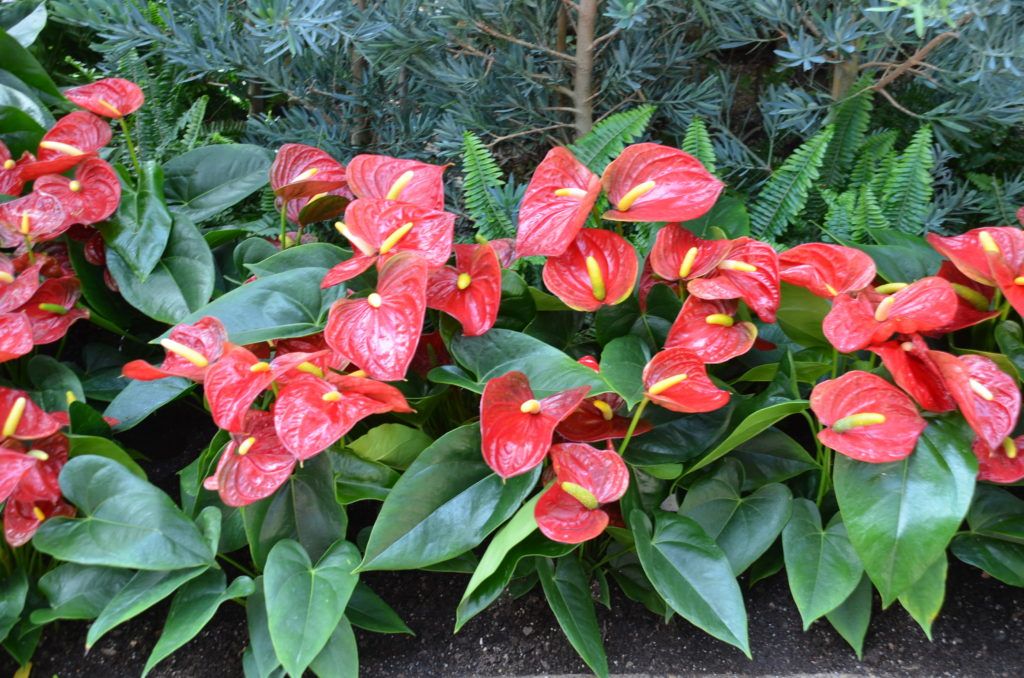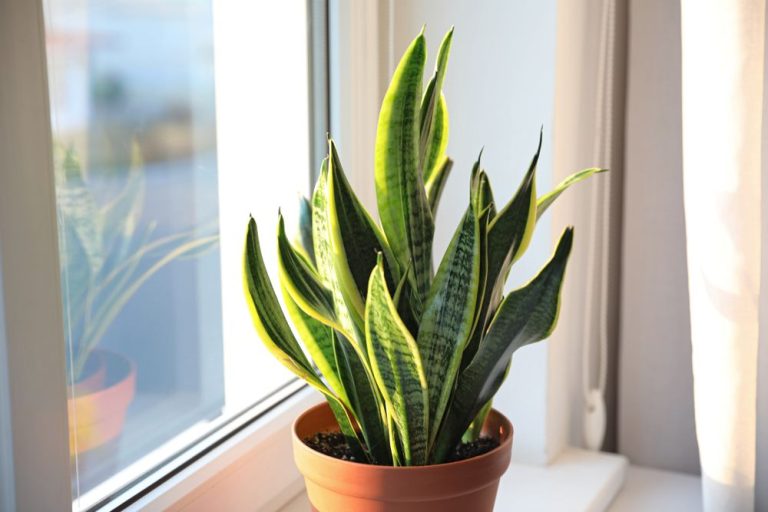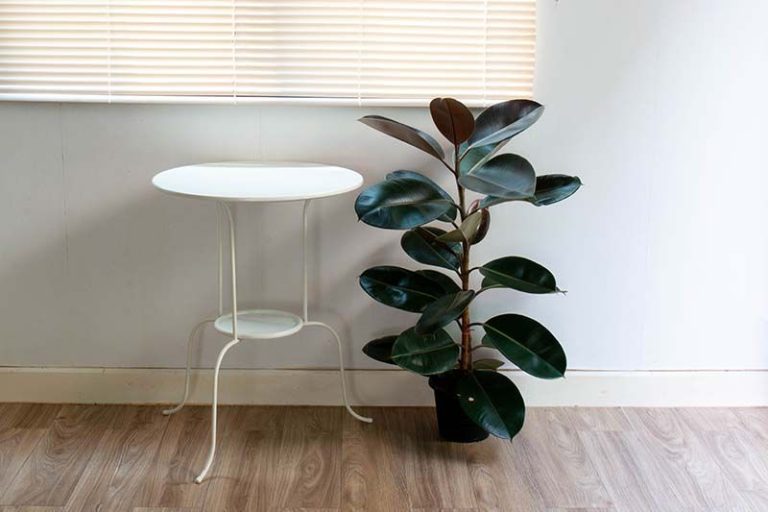A Beginner’S Guide To Caring For Anthurium Plants Indoors
Anthuriums are a popular tropical plant known for their lush, heart-shaped leaves and brightly colored flower spathes. They originate from the rainforests of Central and South America and are native to countries like Colombia, Costa Rica, and Brazil [1]. In the wild, anthuriums grow as epiphytes, meaning they cling to trees and absorb moisture and nutrients from the air and rain [2]. There are over 1,000 different anthurium species, but some of the most popular houseplant varieties include the flamingo flower (Anthurium andraeanum), tailflower (Anthurium clarinervium), and painter’s palette (Anthurium plowmanii).
Anthuriums are known for their showy spathes, which look like a flowering bract or modified leaf, as well as their spadices, which hold the small, true flowers. The spathes come in bright colors like red, pink, white, green, purple, and orange. The flowers themselves are insignificant, while the colorful spathes last for several weeks before fading. Anthurium leaves are usually simple, large, and heart-shaped with prominent veins. They can range from solid dark green to variegated patterns.
Ideal Growing Conditions
Anthuriums thrive in warm temperatures between 70-90°F. They prefer high humidity around 60-70%. Lightwise, anthuriums do best in bright, indirect light. Direct sun will scorch the leaves. Place them near an east or south facing window where they’ll get bright light in the morning or day without getting afternoon sun.

According to The Spruce, “Place anthuriums in a location where they will receive bright, indirect light—near a south- or east-facing window is ideal. Protect the plants from direct sunlight, which can scorch the leaves.”[1]
Gardeners’ World recommends keeping anthuriums “in a warm room that’s around 15-20°C, away from draughts and radiators. High humidity is best, so a bathroom or conservatory is ideal.”[2]
Soil Needs
Anthuriums thrive in a well-draining, organic potting mix. The ideal pH for the soil is around 6.5-7.0. A good potting mix contains ingredients like peat moss, perlite, pine bark, and coconut coir. This provides moisture retention while allowing excess water to drain away from the roots.
You can create your own mix using 1 part peat moss or coco coir, 1 part perlite or coarse sand, and 1 part pine bark or orchid bark. Make sure the pot has drainage holes to prevent soggy soil. Anthuriums are sensitive to overly wet conditions that can lead to root rot.
Adding some horticultural charcoal can help aerate the soil and regulate pH levels. Avoid regular potting soil or anything too dense, as anthuriums need more air circulation around their roots. Test the soil pH periodically and amend with lime if it becomes too acidic below 6.0.
Watering
Anthuriums prefer a moist, but not soggy or waterlogged soil. The key is to let the soil partially dry out between waterings. A good rule of thumb is to water about once a week when the top 1-2 inches of soil become dry. You can check this by sticking your finger in the soil to gauge moisture.
These plants are sensitive to overwatering, which can lead to root rot. Signs of overwatering include yellowing or curling leaves, stunted growth, and moldy soil. If you notice these issues, allow the soil to completely dry out before watering again.
Underwatering will cause the leaves to brown, wilt, and droop. The plant may appear dried out overall. Resume a regular watering schedule if you notice these problems.
In general, err on the side of underwatering rather than overwatering anthuriums. Letting the soil slightly dry out is better than keeping it perpetually soggy.
During the winter months when growth slows, reduce watering to about every other week. Always check soil moisture before watering to avoid oversaturating the soil.
Sources: https://www.justaddiceorchids.com/orchid-care-blog/6-biggest-anthurium-care-mistakes, https://www.gardeningknowhow.com/houseplants/anthurium/anthurium-watering-instructions.htm
Fertilizing
Fertilizing your anthurium regularly encourages healthy growth and abundant flowering. Most anthuriums will benefit from fertilizer applied at one-quarter or one-half strength every 4-6 weeks during the growing season (spring through fall). Avoid fertilizing during the winter when growth slows.
There are two main types of fertilizer suitable for anthuriums:
- Slow-release fertilizer – Granular fertilizers that release nutrients over time. Apply once and the effects last for several weeks. Examples include Osmocote Indoor & Outdoor and Miracle-Gro Indoor Plant Food Spikes.
- Liquid fertilizer – Soluble fertilizers that are mixed with water and applied every few weeks. Choose a balanced liquid fertilizer like Miracle-Gro Indoor Plant Food. Always dilute liquid fertilizers to half or quarter strength for anthuriums.
Organic fertilizer options like compost, worm castings, fish emulsion, or compost tea can also be used for anthuriums. Like chemical fertilizers, only apply at diluted strengths every 4-6 weeks.
Avoid using orchid fertilizer on anthuriums as it may be too high in nitrogen. Anthuriums thrive on a balanced fertilizer with an NPK ratio close to 20-20-20.
Monitor your plant’s response to fertilizer to determine the optimal feeding schedule. Leaves that are small or turn yellow between fertilizations likely need more frequent feeding.Brown leaf tips indicate overfertilization.
Pruning
Pruning anthuriums helps promote healthy growth and flowering. It’s recommended to prune anthuriums in the spring or summer months. Use a clean, sharp pair of secateurs to make pruning cuts. Wear gloves when pruning to avoid skin irritation from the plant’s sap.
Remove any dead, damaged, or diseased foliage first when pruning anthuriums. Cut off leaves at the base of the stem. Also prune off any crowded, overlapping leaves that are blocking light from reaching the lower leaves. According to Gardening Know How, removing older leaves can help redirect the plant’s energy to new growth and flowering [1].
You can prune back leggy stems to encourage a fuller, bushier plant. Prune suckers emerging from the base of the plant as these will zap energy from the main plant. Bloomifique recommends pruning anthuriums throughout the year as needed to maintain the desired shape and size [2]. Just be careful not to overprune or remove more than 1/3 of the foliage at one time.
Repotting
Anthuriums should be repotted every two to three years, or once they’ve outgrown their current pot, according to https://www.justaddiceorchids.com/orchid-care-blog/anthurium-repotting-101. The best time to repot an anthurium is in the spring or summer when the plant is actively growing.
When repotting an anthurium, carefully remove it from its current pot and loosen any tightly bound roots. Prune off any dead roots. Select a pot that is about 2 inches larger than the current pot. Anthuriums like being slightly root-bound so don’t choose a pot that is excessively large.
Use a well-draining potting mix, such as one containing peat moss, pine bark, perlite and charcoal. Place a layer of potting mix in the bottom of the new pot and set the anthurium on top. Fill in around the roots with more potting mix, firming it down gently. Leave about 1/2 inch between the top of the soil and the rim of the pot. Water thoroughly after repotting. Allow the plant time to recover in a shady spot for a few weeks before moving it back into brighter light.
Pest and Disease Control
Anthuriums can be susceptible to several common houseplant pests. The most prevalent pests include:
- Aphids – Small, soft-bodied insects that suck plant juices. They secrete honeydew which leads to sooty mold growth. Treat with insecticidal soap or neem oil (source).
- Mealybugs – Small, soft-bodied insects covered in white waxy coating. They suck plant juices and leave honeydew. Remove with a cotton swab dipped in alcohol or treat with neem oil (source).
- Thrips – Tiny insects that rasp and suck contents from leaves and flowers. They leave silver scarring on foliage. Use sticky traps and insecticidal soap (source).
- Scale – Small immobile insects that attach themselves to leaves and stems. They have a waxy protective coating. Wipe off with alcohol or treat with horticultural oil (source).
To prevent pests, isolate new plants, inspect regularly, and keep humidity levels around 60%. Using neem oil or insecticidal soap as a preventative spray can also deter pests.
Toxicity
Anthurium plants contain calcium oxalate crystals, which can cause irritation and intense pain if ingested (Source). The crystals are primarily concentrated in the leaves and stems, but all parts of the plant can be toxic (Source).
If pets or humans ingest part of an anthurium plant, they may experience mouth pain, swelling of the lips, tongue, and throat, drooling, vomiting, and difficulty swallowing (Source). The irritation generally clears within a day or two. Severe reactions are rare, but anthurium poisoning can potentially cause more serious digestive issues if large quantities are consumed.
If you suspect your pet has ingested part of an anthurium plant, contact your veterinarian immediately. You can also call the ASPCA Poison Control Center hotline. Treatment involves relieving symptoms and preventing further irritation until the toxins pass through the body.
FAQ
Here are answers to some frequently asked questions about caring for Anthurium plants as a beginner:
What are the ideal light conditions for an Anthurium plant?
Anthuriums thrive in bright, indirect light. Direct sunlight can scorch their leaves. Place them near an east or west facing window where they’ll get a few hours of gentle morning or late afternoon sun. Anthuriums can adapt to lower light, but their growth will slow and flowering diminish.
How often should I water my Anthurium?
Allow the top 50% of the soil to dry out between waterings. Water thoroughly until it drains from the pot’s drainage holes, then dump out any excess from the saucer. Mist the leaves a few times per week as they appreciate humidity. Overwatering is the most common reason for an Anthurium decline.
What temperature is best for an Anthurium plant?
Daytime temps of 75-85°F and around 60°F at night suit them well. Keep them away from cold drafts or hot heating vents to avoid temperature extremes that can damage their foliage.
Why are the leaves on my Anthurium turning brown?
If the leaf edges or tips turn brown, it’s usually from inconsistent watering. Allow more time between waterings. Brown leaf spots indicate bacterial or fungal disease. Improve air circulation and water at the base, not the leaves. If many leaves rapidly turn brown, it could signal root rot from overwatering.
How do I get my Anthurium to bloom again?
Ensure the plant gets bright, indirect light. Apply a balanced fertilizer every 2-4 weeks while actively growing. Maintain warm temps around 80°F. Give slightly less water in fall and winter months to induce flowering. Removing faded flowers can also encourage new blooms.





